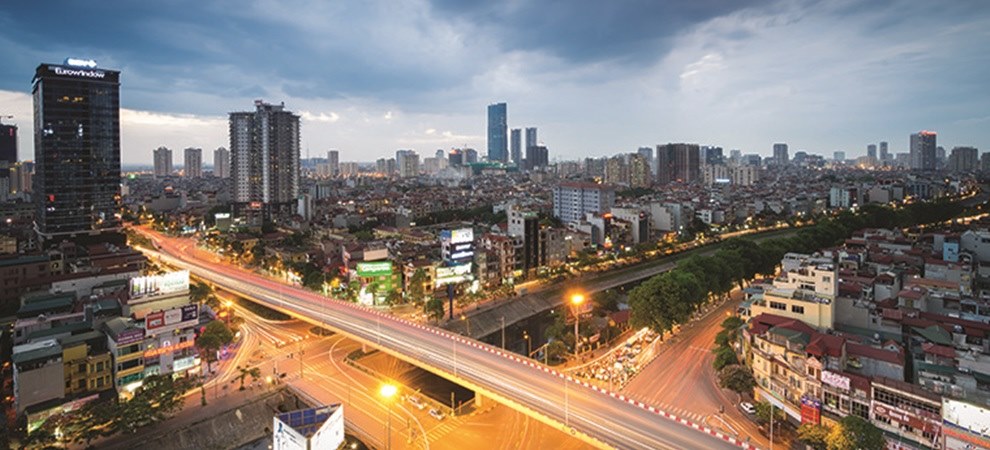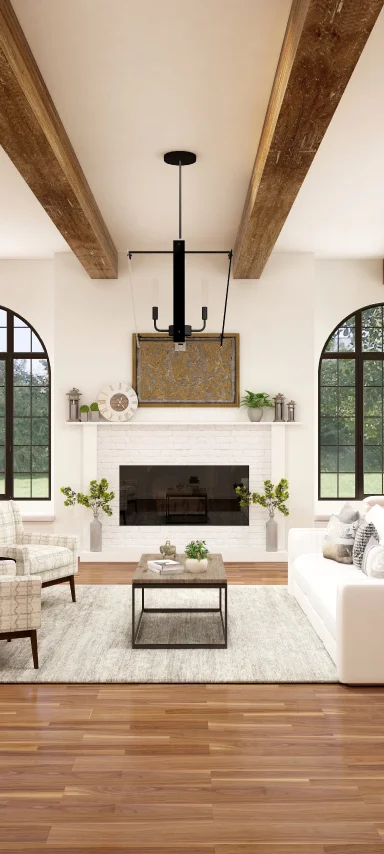Key macro-economic factors are breathing new life into the property market into the Vietnamese capital’s property market
It may seem anomalous given its famously crazy traffic and cacophony of sights, smells and sounds, but things have a tendency to move a little slower in Hanoi than in Ho Chi Minh City.
While Vietnam’s southern hub is firmly in place as the country’s economic hub, with all the commercial benefits that entails, the capital has taken a while longer to establish itself as truly dynamic modern base.
This game of catch-up is currently being played out in the property market where Hanoi is witnessing a gradual return of confidence in contrast to the wholesale bullishness at play down in the more freewheeling south.
Despite the comparatively low-key nature of the market in Hanoi, the revitalising combination of factors that has injected new life into the property sector in Ho Chi Minh City, and in other hotspots such as Danang, has also had a clear impact on the capital.
More on Vietnam: It will be a solid year for Vietnam real estate, per experts
As has been widely reported, Vietnam’s property market suffered a massive crisis around the end of the last decade. Speculators rather than end users were driving supply, quality control and strategic planning were questionable at best and property prices were rising by up to 60 percent within a year. Inflation, meanwhile, reached a level of 28.7 percent in 2008.
“Things tailed off almost completely,” says Marc Townsend, managing director of CBRE Vietnam. “The situation was particularly grave in Hanoi where there really wasn’t the demand for the huge amount of office, retail and residential supply that was coming on line.”

Daily life in Hanoi’s Old Quarter
Since that dark period, however, several key macro-economic developments have served to make Hanoi an altogether more attractive prospect for local and foreign investors alike. Significantly, measures introduced by the government to reduce inflations and curb interest rates appear to have had the desired effect of restoring consumer confidence. Softening fuel prices and a relatively stable currency too served to put a spring back into the step of investors.
“People are thinking to themselves ‘I’ve still got a job and inflation rates are coming down so why not invest?’,” adds Townsend. “Before you could get around 16 percent as a typical interest rate. Now it is generally hovering around 6 percent. Therefore people with money are turning back towards the property market as a way of making their money work for them again.”
With height restrictions and lack of available space limiting scope for development in Hoan Kiem District – Hanoi’s centre of commerce for more than a millennium – the development of a new CBD has been a priority for several years. Now, with better road infrastructure, ample conferencing facilities and one of the city’s best luxury hotels D the new JW Marriott in place, the stage is set for Tu Liem District, in the west of the city, to serve as a suitable base for local and multi-national companies. Significant office projects in this area include the Keangnam Hanoi Landmark Tower, the tallest building in Vietnam, the Handico Tower and the MD Complex Tower. The Thang Long Shopping Mall, meanwhile, will bolster retail offerings.
More on Vietnam: Why Hai Phong is the one area to watch out for
“It is going to take a while yet for demand to catch up with supply all over Hanoi,” says Timothy Horton of Cushman and Wakefield (Vietnam). “I think what is heartening is that the situation is fluid again. There was a stage when Hanoi was just littered with unfinished and abandoned projects. Most of these are now being completed which is good to see.”
Another factor working in Hanoi’s favour are huge advances in the city’s transport infrastructure. Last year saw the completion of the new Terminal 2 at Hanoi’s Noi Bai International Airport. The addition of the extra terminal will mean that Noi Bai can absorb up to 25 million passengers per year and 370 flights, making it a serious international hub. Meanwhile, the completion of the Nhat Tan Bridge linking the airport to the city has reduced travel times by nearly a half to around 35 minutes. Advances are also being made on the city’s metro system with around 13.5 kilometres of track expected to be in use by the end of 2016.

New condos rise in Hanoi
Ho Chi Minh City is likely to remain Vietnam’s commercial hub for a while yet. But with north Vietnam becoming a major centre for manufacturing – especially for companies from East Asia (Korea, Japan, Taiwan) – Hanoi’s potential is clear.
“The absorption rate in Hanoi is much more difficult to reach than in Ho Chi Minh City, because generally companies will have a rep office there with the HQ in the south,” adds Horton. “But with its excellent infrastructure and with landlords being more realistic with the rents, Hanoi is starting to stake its claim as a corporate base more strongly. Because the government offices are here, it can be easier for companies to get things done and we are definitely seeing a growing Korean and Japanese presence.”
The city’s residential market is also on the way back after what experts term “a long cold winter” – a reflection of the growing consumer confidence. New project launches in 2014 were double that of the previous year, while transactions were up by 60 percent. Analysts agree that it is too early to tell what kind of effect Vietnam’s new open foreign ownership laws are likely to have on the market, but there’s a feeling that the potential for investment from saturated markets such as Singapore and Hong Kong and from Việt Kiều (overseas Vietnamese) – previously barred from purchasing property – is a major development.
More: Vietnam Property Awards returns in 2016 to reward Asia’s most exciting market
“What is inarguable is that Hanoi, and indeed the whole of Vietnam, is extremely good value,” notes CBRE’s Townsend. “If you are an investor from Singapore looking to put some money into property you could do far worse than a place where you can get a decent 60-sqm apartment for less than USD120,000. I think that Ho Chi Minh City will benefit more than Hanoi as the developers are better and it is generally easier to rent out property. However, the Việt Kiều presence may well have more of an influence in the north.”
With its many lakes and its gracious tree-lined boulevards, Hanoi can seem deceptively languid. But with Vietnam’s economy revving up, the property market in the ancient city is once again moving through the gears.
Hanoi’s hottest properties

Eco-Park
Developer: Viet Hung Urban Development and Investment
Completion: Phase 1 in 2013, phase 2 in 2016
Price: USD950-1,200 per sqm
Units: 1,500 apartments, 500 villas and shophouses in phase 1; 245 units in phase 2
Distinguishing features: Eco-focused community with park, hospital, university and river view

Royal City
Developer: Vingroup
Completion: 2013
Price: USD1,850-3,700 per sqm
Units: 3,500 apartments
Distinguishing features: Community feel with modern shopping mall, schools and modern healthcare under brand name of Vingroup

Golden Westlake
Developer: Ha Viet Tung Shing Co
Completion: 2010
Price: USD2,500-3400 per sqm
Number units: 370 apartments, 16 villas and penthouse.
Distinguishing features: Fantastic views over West Lake

D’Palais De Louis
Developer: Tan Hoang Minh Group
Price: USD6,500 per sqm
Distinguishing features: Prime position in exclusive West Lake location






